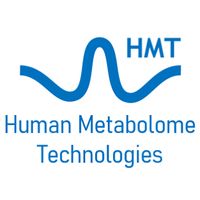Neurometabolism: A bold, new frontier
Billions of neurons communicate with each other through trillions of synapses to create a functioning, unique system we know as they human brain. Though Neuroscience research has long operated at the system, cellular, and molecular levels, Neurometabolism is a new and burgeoning field for researchers around the globe. The mammalian brain requires a constant supply of energy - roughly 20% of a human adult's energy expenditure, and the vast majority of that energy goes towards the activation of channels involved in synapse signaling. Additionally, although there are other proposed candidates for neuronal fuel, glucose is considered an obligate fuel source. Thus, the endocrine transport of glucose and function of metabolic pathways within the brain are tightly controlled and essential for normal cognitive function. [1]
Of the many cell types found in the brain, neurons are of particular interest when considering the application of metabolomics. For one: neurons transmit information at the aforementioned multitude of synapses via small molecules. Given a sensitive methodology for metabolomics, one could measure both the extra- and intra-cellular concentrations of these neurotransmitters, painting a complete picture of the signaling events that are occurring, in gestalt. This could be invaluable for understanding an excitement or inhibition paradigm caused by disease, or drug application. Additionally, in the consideration of the neuronal cell type: neurons are (largely) post-mitotic. Once neurons become fully differentiated, they exit the cell cycle and exist as a single cell, until death. This means that the maintenance of cellular health is paramount for both the neuron, itself, as well as any innervating neurons or adjacent support cells. Using metabolomics, one could measure metabolite levels that are linked to cellular health (Glutathione, amino acids, lipids, etc...) and monitor those conditions under the experimental paradigm. [2]
Neurons are unique in their utilization of mitochondria, not for the generation of energy, but other wrinkles (or cisternae, as it were) that occur due to the nature of neurons, themselves. Due to aberrations found in mitochondria in various diseases, it is believed that improperly functioning mitochondria may play a part in the progression of several neurological diseases, such as ALS, Parkinson's, and Alzheimer's. Additionally, mitochondria are transported throughout the neuron for particular purposes: along the axon for synaptogenesis, within dendrites for Ca2+ signaling, and throughout to generate the ATP required for excitability of the cell, and subsequent transmission of an action potential. Measuring mitochondria-related metabolites, such as those involved in the TCA cycle, can reveal additional information about the state of the neuron, itself, as well as the larger neuronal network. [3]
Though neurons are the primary drivers of information transfer in the brain, the roles played by non-neuronal cell types have become increasingly studied over the couple of decades. Glial cell types, particularly astrocytes and oligodendrocytes, have been shown to be highly glycolytic (in high energy demand) and to have a surprising amount of metabolic transport to neurons. Glucose, lactate, and, rarely, acetate have been shown to be shuttled from glial cells to neurons, to provide additional energy substrates. Measurement and monitoring of these metabolites in glia, or in the inter-cellular space, could be a powerful tool for researchers interested in how glial cells support neuronal function. [4]
Taking a more clinical perspective, metabolomics technologies can be utilized for biomarker discovery. As a specific example: Human Metabolome Technologies (HMT) is using its unique Capillary Electrophoresis Mass Spectrometry (CE-MS) technology to develop a biomarker for Major Depressive Disorder (MDD). The economic and social costs of MDD, worldwide, are astounding, and were the impetus for biomarker development by HMT. However, there are many other neurologic disorders, from Alzheimers to Autism Spectrum Disorders like Rett Syndrome and Angelman Syndrome, that may benefit from the specificity and sensitivity of CE-MS in the search for a biomarker. Using a diagnostic metabolite to allow early detection of a neurologic disease affords clinicians the opportunity to diagnose much earlier, which may allow for early intervention and improved outcomes for patients. [5]
References:
[1] Brain Glucose-Sensing Mechanism and Energy Homeostasis
[2] Cortical neurons gradually attain a post-mitotic state
[3] Mitochondria and Neuroplasticity
[4] Glia-neuron energy metabolism in health and diseases: New insights into the role of nervous system metabolic transporters
[5] Plasma metabolome analysis of patients with major depressive disorder









